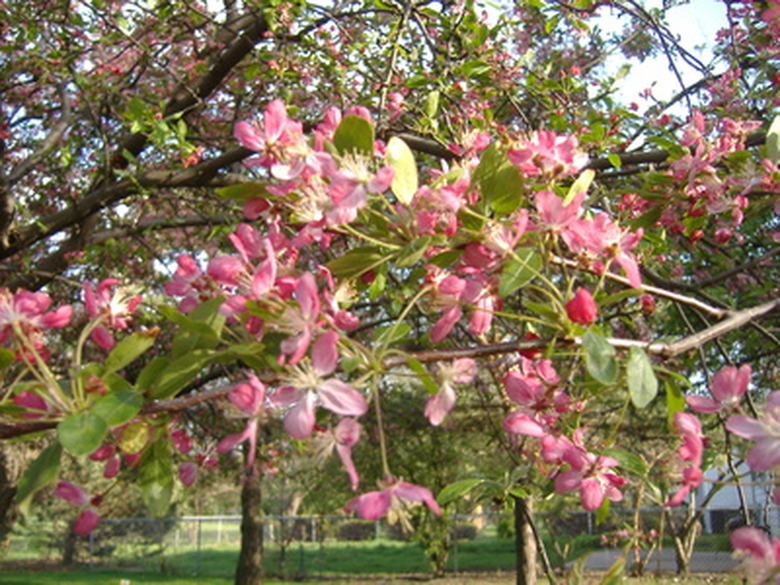How To Plant A Flowering Plum Tree
Things Needed
- Well-draining average soil
- Compost
- Shovel
Flowering fruit trees add springtime color to any landscape where you plant them, and they are easy to plant and care for. Grown for ornamental purposes, flowering plum trees (Prunus cerasifera) have deep-purple leaves that are attractive in the garden even when the trees' pink and white flowers are not in bloom. The flowering plum tree thrives in full sun in USDA Plant Hardiness Zones 4 through 9. It grows to 25 feet tall with a 25-foot spread, and it is a fairly fast grower. This tree produces small, edible fruit that ripen in late summer.
Step 1
Plant your flowering plum tree in a sunny area in early spring or late winter. Dig a planting hole twice as large as your tree's root ball, then mix the soil with compost or other organic matter, using 1 part compost to 4 parts soil.
- Flowering fruit trees add springtime color to any landscape where you plant them, and they are easy to plant and care for.
- Grown for ornamental purposes, flowering plum trees (Prunus cerasifera) have deep-purple leaves that are attractive in the garden even when the trees' pink and white flowers are not in bloom.
Step 2
Backfill your planting hole about half full with the soil/compost mixture you dug out.
Step 3
Remove your young tree from its nursery pot and gently loosen the roots.
Step 4
Set your tree into the planting hole, making sure it sits where the roots will be firmly underground and the base of the trunk will be above soil level. Be certain not to bury the grafted section of the trunk, which is often 3 to 4 inches above the root zone. Then fill the planting hole with the remainder of the soil/compost and gently tap it down around the trunk with your foot.
Step 5
Water your flowering plum tree well by laying a hose at its base at a slow drip for one hour or longer. Water it again the same way several days after planting and check the soil moisture frequently during its first month in the ground. After that time, water it about once each week, using the slow-drip method.
- Backfill your planting hole about half full with the soil/compost mixture you dug out.
- Then fill the planting hole with the remainder of the soil/compost and gently tap it down around the trunk with your foot.
Tip
Make sure your flowering plum tree will have about 12 feet of space from the trunk to any other large plants or buildings when it reaches maturity. Flowering plum trees can tolerate a range of soil pH from alkaline to slightly acidic. Fertilize three times a year with a 5-10-10 plant food designed for flowering trees. Prune your flowering plum during its winter dormant season to keep its pleasing, rounded shape and to cut off any dead or diseased branches.
